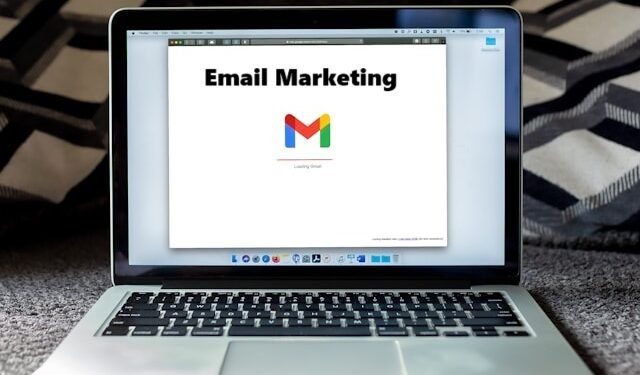In the world of eCommerce, customer engagement is key to building a successful business. But over time, even your most loyal customers can drift away, becoming inactive and disengaged. These inactive customers represent lost potential revenue, and in many cases, all they need is a little nudge to re-engage with your brand. This is where re-engagement emails come in. Designed specifically to win back inactive customers, re-engagement emails can reignite interest, rebuild trust, and drive sales. In this article, we’ll explore how to create effective re-engagement emails that win back customers and boost your eCommerce business.
Contents
- 1 1. Why Re-Engagement Emails Are Important
- 2 Related posts
- 3 Tips and Tricks to Make Your Business Marketing Campaigns Better
- 4 Advantages of PPC Advertising for B2B Companies in London
- 5 5 Tips to Choose the Best Graphic Design Course
- 6 Understanding Landing Pages: A Dynamic Digital Sales Tool
- 7 The Importance of Partnering with a Digital Marketing Agency That Understands Your Business
- 8 Unlocking Success: A Comprehensive Guide to Local SEO Services for Businesses
- 9 A Simple Guide To Entretech.org
- 10 2. When to Send Re-Engagement Emails
- 11 3. Segmenting Your Audience for Re-Engagement Emails
- 12 4. Crafting Compelling Re-Engagement Email Subject Lines
- 13 5. Offering Value to Re-Engage Customers
- 14 6. Designing Engaging Email Content
- 15 7. Following Up and Tracking Success
- 16 8. Cleaning Your Email List
- 17 Conclusion
1. Why Re-Engagement Emails Are Important
Customers often disengage for a variety of reasons. They may have lost interest in your product, been distracted by competitors, or simply forgotten about your brand. However, studies show that it is much more cost-effective to re-engage existing customers than to acquire new ones. By sending a well-crafted re-engagement email, you have the opportunity to remind customers of your value, offer incentives to return, and, most importantly, reignite their interest in your brand.
A re-engagement email is like a gentle reminder that lets customers know you still value them. It can also help you identify who is still interested and clean up your email list by removing customers who are no longer engaged. Ultimately, re-engagement emails are critical to maintaining a healthy, engaged email list, increasing customer lifetime value, and boosting sales.
2. When to Send Re-Engagement Emails
Timing is crucial when it comes to re-engagement emails. The key is to find the sweet spot when a customer is no longer active but hasn’t completely disengaged from your brand. Typically, eCommerce brands send re-engagement emails when customers haven’t interacted with the business for a few months. However, the exact time frame can vary depending on your industry and the buying cycle of your products.
For instance, a fashion brand might notice that a customer hasn’t purchased anything for six months, which may signal disengagement. On the other hand, a company selling high-ticket items like electronics might expect a longer buying cycle and wait a year before considering a customer inactive. Regularly monitor your customer behavior to determine when engagement typically drops off, and plan your re-engagement campaigns accordingly.
3. Segmenting Your Audience for Re-Engagement Emails
Before sending a re-engagement email, it’s important to segment your audience. Not all inactive customers are the same, and the way you approach them should reflect that. For example, some customers may have made multiple purchases in the past but have been inactive for several months. Others may have signed up for your email list but never made a purchase. Segmenting your audience allows you to tailor your messaging to specific groups, increasing the chances of re-engagement.
Consider creating segments like:
- High-value customers: Those who have made multiple purchases but have recently become inactive.
- One-time buyers: Customers who have only made one purchase and have not returned.
- Non-purchasers: Subscribers who signed up for your email list but never made a purchase.
- Cart abandoners: Customers who added items to their cart but didn’t complete the checkout process.
Each of these segments requires a different approach. For example, high-value customers may need a special offer or personalized message, while non-purchasers may need an incentive to make their first purchase.
4. Crafting Compelling Re-Engagement Email Subject Lines
If you own an email marketing agency, the subject line is one of the most important elements of a re-engagement email. It’s the first thing your customer will see, and it needs to stand out in a crowded inbox. To create an effective subject line, focus on evoking curiosity, offering value, or creating a sense of urgency.
Some examples of re-engagement email subject lines include:
- “We miss you! Here’s 20% off your next purchase.”
- “Is this goodbye? Get 15% off before you go!”
- “It’s been a while… Come back for something special.”
- “We noticed you haven’t shopped with us lately… Here’s a gift.”
Using personalization in your subject lines, such as including the customer’s name or referencing their previous purchases, can also increase open rates. Experiment with different subject lines using A/B testing to find what resonates best with your audience.
5. Offering Value to Re-Engage Customers
One of the most effective ways to win back inactive customers is by offering them something of value. Discounts, special promotions, and exclusive offers can all serve as powerful motivators to re-engage customers who may be on the fence about returning.
Consider offering:
- Exclusive Discounts: Offering a time-limited discount specifically for inactive customers can give them the push they need to make a purchase.
- Free Shipping: If shipping costs are a barrier for your customers, offering free shipping on their next order can be a compelling incentive.
- Personalized Product Recommendations: Use customer data to recommend products based on their previous purchases or browsing behavior. Showing that you understand their preferences can make them more likely to return.
- Loyalty Program Points: If your eCommerce business has a loyalty program, offering bonus points or exclusive rewards for returning customers can help reignite interest.
Remember, the key is to make the offer feel exclusive and personalized to the customer’s past behavior. This can make them feel valued and appreciated, which increases the likelihood of re-engagement.
6. Designing Engaging Email Content
Once your customers have opened the email, the content needs to be engaging and persuasive. A well-designed re-engagement email should have a clear call to action (CTA), compelling copy, and visually appealing design elements that capture the recipient’s attention.
Some elements to consider:
- Personalized Copy: Use the customer’s name, reference their previous interactions with your brand, and acknowledge that you’ve missed them.
- Visual Appeal: Include high-quality images of your products or use attention-grabbing visuals like GIFs or videos.
- Clear CTA: The call to action should be bold, concise, and easy to find. Whether it’s “Shop Now,” “Claim Your Discount,” or “Discover New Arrivals,” the CTA should guide the customer toward re-engagement.
- Mobile Optimization: Ensure your re-engagement email is optimized for mobile devices. A large percentage of emails are opened on smartphones, and a poor mobile experience could lead to lost opportunities.
7. Following Up and Tracking Success
Re-engagement is not always a one-email process. In some cases, you may need to send multiple re-engagement emails in a series. Consider creating a drip campaign that gradually builds interest, starting with a simple “We miss you” message and escalating to more enticing offers over time.
Once you’ve sent your re-engagement emails, it’s important to track their performance. Monitor key metrics like open rates, click-through rates, and conversion rates to see how well your emails are performing. Additionally, track how many inactive customers re-engage with your brand and make a purchase. Use this data to refine your re-engagement strategy and improve future campaigns.
8. Cleaning Your Email List
If your re-engagement emails fail to bring some customers back, it may be time to let them go. Maintaining a clean email list is crucial for maintaining high deliverability rates and avoiding spam filters. After your re-engagement campaign, consider removing inactive customers who did not respond. This will help improve your overall email performance and ensure that you’re focusing on an engaged audience.
Conclusion
Re-engagement emails are an essential tool for eCommerce brands looking to win back inactive customers. By crafting compelling subject lines, offering value, and personalizing your content, you can reignite interest and drive sales. Remember that timing, segmentation, and tracking are key to a successful re-engagement campaign. Ultimately, the goal is to show customers that they are valued and that your brand still has something exciting to offer them. With the right approach, re-engagement emails can turn lapsed customers into loyal, repeat buyers.
Also Read – Navigating the Digital Landscape: How SEO and AI are Revolutionizing Online Marketing


















